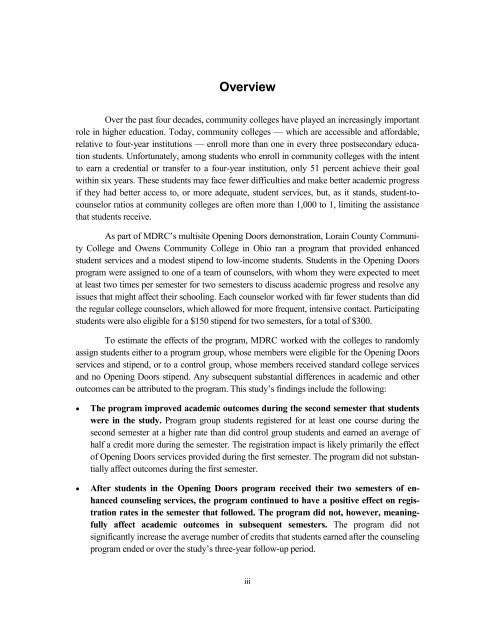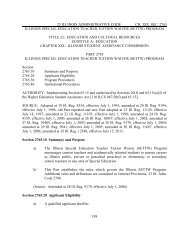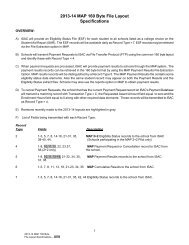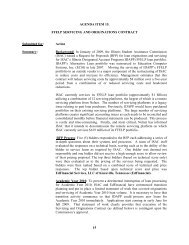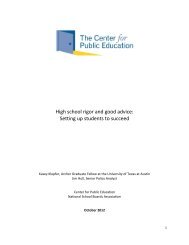MORE GUIDANCE, BETTER RESULTS?
MORE GUIDANCE, BETTER RESULTS?
MORE GUIDANCE, BETTER RESULTS?
You also want an ePaper? Increase the reach of your titles
YUMPU automatically turns print PDFs into web optimized ePapers that Google loves.
OverviewOver the past four decades, community colleges have played an increasingly importantrole in higher education. Today, community colleges — which are accessible and affordable,relative to four-year institutions — enroll more than one in every three postsecondary educationstudents. Unfortunately, among students who enroll in community colleges with the intentto earn a credential or transfer to a four-year institution, only 51 percent achieve their goalwithin six years. These students may face fewer difficulties and make better academic progressif they had better access to, or more adequate, student services, but, as it stands, student-tocounselorratios at community colleges are often more than 1,000 to 1, limiting the assistancethat students receive.As part of MDRC’s multisite Opening Doors demonstration, Lorain County CommunityCollege and Owens Community College in Ohio ran a program that provided enhancedstudent services and a modest stipend to low-income students. Students in the Opening Doorsprogram were assigned to one of a team of counselors, with whom they were expected to meetat least two times per semester for two semesters to discuss academic progress and resolve anyissues that might affect their schooling. Each counselor worked with far fewer students than didthe regular college counselors, which allowed for more frequent, intensive contact. Participatingstudents were also eligible for a $150 stipend for two semesters, for a total of $300.To estimate the effects of the program, MDRC worked with the colleges to randomlyassign students either to a program group, whose members were eligible for the Opening Doorsservices and stipend, or to a control group, whose members received standard college servicesand no Opening Doors stipend. Any subsequent substantial differences in academic and otheroutcomes can be attributed to the program. This study’s findings include the following:• The program improved academic outcomes during the second semester that studentswere in the study. Program group students registered for at least one course during thesecond semester at a higher rate than did control group students and earned an average ofhalf a credit more during the semester. The registration impact is likely primarily the effectof Opening Doors services provided during the first semester. The program did not substantiallyaffect outcomes during the first semester.• After students in the Opening Doors program received their two semesters of enhancedcounseling services, the program continued to have a positive effect on registrationrates in the semester that followed. The program did not, however, meaningfullyaffect academic outcomes in subsequent semesters. The program did notsignificantly increase the average number of credits that students earned after the counselingprogram ended or over the study’s three-year follow-up period.iii


